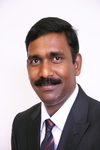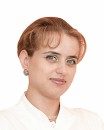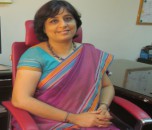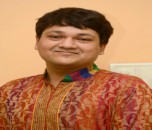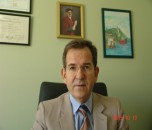About Conference
On behalf of Conference Series, we are pleased to invite you to our “ 3rd International Meeting on Aesthetic Medicine” that will be held in Toronto, Canada from August 08-09, 2022. We would be delighted to have you at this conference to interact with world class researchers, scientist, students from across the world, we would love to hear your opinion about aesthetic medicine(dermatology) research. We are anticipating more than 200 delegates from across the globe to share their ideas in the form oral presentation, paper presentation and key notes lecturers on aesthetic medicine. The attending delegates include editorial board members related to conference series journals. This conference will provide you an excellent opportunity to share your ideas and research analysis with world class scientist.
Why to Attend??
Attending Aesthetic Practices 2022 conference will allow you to meet different individuals, who share diverse backgrounds and experiences in aesthetic medicine and dermatology. Experts from different fields of dermatology, cosmetic, aesthetic, plastic and reconstructive surgery will attend the conference to share their ideas and research analysis with everyone. This conference will provide an opportunity to make connection with delegates around the world who share similar research interest. Aesthetic Practices 2022 will provide the platform to establish new scholar cooperation with other university researchers and scientists, Conferences give you the chance to shine as a student/scholar, especially if you’re presenting on any specific topic. Attending this conference may give you the opportunity to learn about a new place and new culture.
About Conference
Aesthetic Practices 2022 conference is mainly focused on the latest developments in aesthetic medicine and dermatology and share their ideas on innovative techniques and knowledge on aesthetic medicine around the world.
Aesthetic Practices 2022
• Conference will encourage you to improve and grow personally and professionally
• The individuals you’ll meet have a plethora of stories to share that can enlighten you.
• Conference will provide an excellent opportunity to attend the presentations given by experts in field of aesthetic medicine and dermatology
• Selected contributions will be published in following International Journals
o Journal of Clinical & Experimental Dermatology Research
o Reconstructive Surgery & Anaplastology
o Cosmetology & Oro Facial Surgery
• Conferences are an excellent opportunity to make connections. Many times, companies attend this type of events to recruit attendees.
• Researchers will have the chance to give paper presentation in front of delegates and experts in the field will have chance to receive feedback.
• The Conferences brings people from all different areas and regions who share ideas in aesthetic medicine field.
Target Audience:
Dermatologists, Cosmetic Dermatologists, Plastic Surgeons, Various Societies and their individuals like American foundation of Dermatology, International Society of Dermatology, Canadian Dermatology Association, SDPA yearly summer dermatology gathering, European foundation of Dermatology, British relationship of Dermatologists, Dermatology Associates Conference and Meetings on Dermatology Global Academy of Medical affiliation, Institutes-Beauty Schools, Advertising Agencies, and Academicians: University Faculties, Research Scholars, and Scientists included.
Sessions and Tracks
Track : 1 Anticipating Corona Virus (COVID-19) impacts on the cosmetic industry
The ongoing coronavirus pandemic has created a seismic shift in living and shopping habits worldwide and beauty has borne a significant brunt of this shopper shake-up, says a retail expert.
The outbreak of coronavirus on a global scale has caused severe economic consequences within the Health and Beauty sphere. The US stock market has seen detrimental impacts in the first quarter with the worst one-day slide in two years, dumping stocks 3 percent. U.S consumers are changing their buying behaviours due to the outbreak, with 27.5% saying that the outbreak has led them to limit or avoid public areas, and so are consumers around the rest of the world. China is specifically facing issues that this epidemic has caused, leading to disruption of the supply chain, projected decreases in revenue and sales within all industries, but especially the beauty industry, as well as the concerns of health within the production factories and other public spaces.
Track 2:Dermatological Disease
Dermatology is the branch of science which offers with the treatment of hair, nails and skin. The ailments associated them are termed as dermatological ailments. It issues each the clinical and surgical features. A dermatologist treats illnesses, in the widest sense, and a few beauty issues of the dermis entails acne is an extended-time period epidermis characterized by areas of blackheads, whiteheads, acne, greasy dermis, and potentially scarring. Skin cancer and malignancy of epithelial cells, Contact dermatitis, Kawasaki syndrome, infection, scars and rashes, Viral skin diseases. Dermatological problems are the intrinsic abnormalities or derangement or abnormal operate related to skin hair and nail (e.g., beginning defects, genetic malfunction).
Track 3:Cosmetology
Cosmetic medicine is one in every of the foremost advanced side within the field of medicine that options the follow of medicine that offers priority to the appearance of someone. The relevant medication and medical specialty surgery emphasizes the identification, treatment, and bar of skin problem, there's a big side of the specialty directed towards rising the patient's look. Cosmetic dermatologists give medical and surgical treatments to individuals with issues like microorganism or fungous infections, aging, acne, sensitivity, unwanted hair, benign skin growths, and uneven skin pigmentation.
Track 4:Plastic surgery
Plastic surgery, the functional, structural, and aesthetic restoration of all manner of defects and deformities of the human body Modern plastic surgery has evolved along two broad themes: reconstruction of anatomic defects and aesthetic enhancement of normal form. The surgical principles of plastic surgery remain focused on preserving vascularity, replacing like tissue with like tissue, respecting anatomic zones, and fostering wound healing by minimizing tissue trauma. As a diverse surgical specialty, the discipline of plastic surgery not only interacts with other disciplines of medicine but also merges medical science with the art of physical restoration. It couples careful evaluation of defects with sophisticated arrangements of tissue to improve the uniformity and natural resemblance of repair. Innovative techniques used in plastic surgery are largely the result of the successful clinical application of advances in tissue engineering, nanotechnology, and gene therapy.
Track 5:Aesthetic Gynaecology
Aesthetic Gynaecology is a highly specialized surgery, also known as “Cosmetic Vaginal Surgery”. It can have multiple benefits including:
–Tightening the vagina
– Improved appearance of the genitals
– Improved sensation from the vaginal area
– Removing genital pain or discomfort
– Altering the appearance of the vaginal lips
– Reducing the size of the clitoral hood
– G-spot enhancements for increased sexual sensation
Track 6:Breast augmentation
Breast augmentation and augmentation mammoplasty (colloquially known as a "boob job") are plastic surgery terms for the breast-implant and the fat-graft mammoplasty approaches used to increase the size, change the shape, and alter the texture of the breasts of a woman. As a primary reconstruction, augmentation mammoplasty is applied to effect a post–mastectomy breast reconstruction, the repair of the chest wound consequent to the removal of a cancerous breast; to correct congenital defects of the breast(s); and to correct congenital defects of the chest wall. As an elective, cosmetic surgery, primary augmentation changes the aesthetics – of size, shape, and texture – of healthy breasts.
Track 7:Liposuction
Liposuction is the removal of excess body fat by suction using special surgical equipment. A plastic surgeon typically does the surgery.
Liposuction is a type of cosmetic surgery. It removes unwanted excess fat to improve body appearance and to smooth irregular body shapes. The procedure is sometimes called body contouring.
Liposuction may be useful for contouring under the chin, neck, cheeks, upper arms, breasts, abdomen, buttocks, hips, thighs, knees, calves, and ankle areas.
Liposuction is a surgical procedure with risks, and it may involve a painful recovery. Liposuction can have serious or rare fatal complications. So, you should carefully think about your decision to have this surgery.
Types of Liposuction Procedures
• Tumescent liposuction (fluid injection): Tumescent liposuction (fluid injection) is the most common type of liposuction. It involves injecting a large amount of medicated solution into the areas before the fat is removed. Sometimes, the solution may be up to three times the amount of fat to be removed). The fluid is a mixture of local anesthetic (lidocaine), a drug that contracts the blood vessels (epinephrine), and an intravenous (IV) salt solution. Lidocaine helps numb the area during and after surgery. It may be the only anesthesia needed for the procedure. Epinephrine in the solution helps reduce loss of blood, bruising, and swelling. The IV solution helps remove the fat more easily. It is suctioned out along with the fat. This type of liposuction generally takes longer than other types.
• Super-wet technique: Super-wet technique is similar to tumescent liposuction. The difference is that not as much fluid is used during the surgery. The amount of fluid injected is equal to the amount of fat to be removed. This technique takes less time. But it often requires sedation (medicine that makes you drowsy) or general anesthesia (medicine that allows you to be asleep and pain-free).
• Ultrasound-assisted liposuction (UAL): Ultrasound-assisted liposuction (UAL) uses ultrasonic vibrations to turn fat cells into liquid. Afterward, the cells can be vacuumed out. UAL can be done in two ways, external (above the surface of the skin with a special emitter) or internal (below the surface of the skin with a small, heated cannula). This technique may help remove fat from dense, fiber-filled (fibrous) areas of the body such as the upper back or enlarged male breast tissue. UAL is often used together with the tumescent technique, in follow-up (secondary) procedures, or for greater precision. In general, this procedure takes longer than the super-wet technique.
• Laser-assisted liposuction (LAL): Laser-assisted liposuction (LAL) uses laser energy to liquefy fat cells. After the cells are liquefied, they can be vacuumed out or allowed to drain out through small tubes. Because the tube (cannula) used during LAL is smaller than the ones used in traditional liposuction, surgeons prefer using LAL for confined areas. These areas include the chin, jowls, and face. A possible advantage of LAL over other liposuction methods is that energy from the laser stimulates collagen production. This helps prevent skin sag after liposuction. Collagen is the fiber-like protein that helps maintain skin structure.
Track 8:Reconstructive surgery
Reconstructive surgery is often performed on cancer patients as well as on burn and accident victims. It may involve there building of severely fractured bones, as well as skin grafting. Reconstructive surgery includes such procedures as their attachment of an amputated finger or toe, or implanting a prosthesis.
Prostheses are artificial structures and materials that are used to replace missing limbs or teeth, or arthritic hip and knee joints.
In cancer patients, reconstructive surgery is done to restore the function as well as the appearance of the face and other parts of the body. The most commonly performed reconstructive surgeries of cancer patients are breastreconstruction, laceration repair, scar revision, and tumor removal.
The most challenging area of reconstructive surgery involves the structures of the face, neck, and jaw because trauma or cancer treatments often affect the patient's ability to see, eat, taste, swallow, speak, and hear as well as his or her external appearance. The surgeon must try to retain as much sensation as possible when performing skin or bone grafts in the head and neck as well as recreate a reasonably normal appearance.
Track 9: Rhinoplasty
Rhinoplasty can be performed under local or general anesthesia, depending on the exact procedure and the person's preference. It is performed in a surgeon's office, a hospital, or an outpatient surgery center. Complex procedures may require a short hospital stay. The procedure often takes 1 to 2 hours. It may take longer.
With local anesthesia, the nose and the area around it are numbed. You will probably be lightly sedated, but awake during the surgery (relaxed and not feeling pain). General anesthesia allows you to sleep through the operation.The surgery is usually done through a cut (incision) made inside the nostrils. In some cases, the cut is made from outside, around the base of the nose. This type of cut is used to perform work on the tip of the nose or if you need a cartilage graft. If the nose needs to be narrowed, the incision may extend around the nostrils. Small incisions may be made on the side of the nose to break, and reshape the bone.
A splint (metal or plastic) may be placed on the outside of the nose. This helps maintain the new shape of the bone when the surgery is finished. Soft plastic splints or nasal packs also may be placed in the nostrils. This helps keep the dividing wall between the air passages (septum) stable.
Track 10:Chemodenervation
Chemodenervation is a term frequently used to describe the use of Botulinum Toxin to treat various forms of neurological conditions. Botulinum Toxin is a natural bacterium produced protein neurotoxin called “Clostirium Botulinum.” It is used to immobilize overactive muscle movements by blocking nerve signals sent from the brain. These nerve signals are instructing the muscles to contract, generating irrepressible spasms. Physicians may use Chemodenervation to reduce symptoms of cerebral palsy, spasmodic torticollis, dystonia and other movement disorders.
The neurotoxin is injected directly into the muscle tissue to weaken excessive activity in specific focal areas. The injection is presented in small doses avoiding any risk of paralysis. When the muscles are relaxed they are no longer able to contract therefore preventing the uncontrollable spasms.
Track 11:Trichology
Trichology is the branch of dermatology that deals with the scientific study of the health of hair and scalp. Trichologists are hair and scalp specialists (one type of skin specialist) who diagnose the causes of hair fall, hair breakage, hair thinning, miniaturization of hairs; diseases of the scalp and treat according to cause.
Track 12:Research in Dermatology
There are unit legion reasons for following associate in nursing interest to try and do analysis in medicine. The skin is that the most vital organ that provides itself to clinical analysis as a result of its visible and it's quite simple to try and do sampling. Medicine analysis may be a terribly huge field and stretches from animal work and basic lab-based analysis on human samples to population-based studies. Within the recent time the analysis in medicine reach to a different height that includes basic science analysis, clinical analysis, new techniques to diagnose medicine diseases, new medical care and deliver treatment.
Track 13:New Techniques in Dermatology
In recent past the technical innovations in medical specialty is sort of promising and it'll take the analysis in medical specialty to a different level. A retrospective analysis of clinical studies conducted before and once the introduction of absorbent gelling materials confirms that utilization of those materials has been related to a marked reduction within the severity of eczema. recombinant deoxyribonucleic acid|deoxyribonucleic acid|desoxyribonucleic acid|DNA} (rDNA) molecules square measure DNA molecules shaped by laboratory strategies of genetic recombination (such as molecular cloning) to pile up genetic material from multiple sources, making sequences that may not well be found within the order. Recombinant deoxyribonucleic acid|deoxyribonucleic acid|desoxyribonucleic acid|DNA} is feasible as a result of DNA molecules from all organisms share identical chemical structure. They disagree solely within the ester sequence among that identical overall structure.
Track 14: Skincare Focus: Acne, Scar and Pigmentary Disorders
Acne damages the face in a maximum of cases, with many patients experiencing some forms of scarring, the severity of which relates to acne grade. The preclinical inflammation and irritation in acne stays throughout the acne lesion’s life cycle, from micro-comedones to closed comedones to inflammatory lesions and eventually to post inflammatory erythema (PIE), post-inflammatory hyperpigmentation (PIH), and scarring. Expectation management is important in approaching the debate on treatment options. The approach to treatment of acne scarring includes both a comprehensive physical exam of the patient and a discussion regarding patient goals, concerns, and tolerance of various treatment options.
Track 15: Cosmetic Surgery
Plastic Surgery Conference also consists of Cosmetic Surgery or Aesthetic Surgery as the main Plastic Surgery divisions include cosmetic or Aesthetic Surgery, Cosmetic Surgery is mainly based upon a person’s own choice whether they have decided to have an operation, or invasive medical procedure, to modify their physical appearance more for cosmetic than the medical reasons. Another one is Non-surgical cosmetic procedures, such as Botox and dermal fillers which are typically used to relax or fill crease lines where these procedures do not involve surgery.
Track 16: Aging Science and anti-aging
Maturing is unavoidable; however a few examinations recommend the impacts of maturing can be turned around. Progressively, thinks about have concentrated on methodologies that could battle maturing at its center - the phone forms that add to age-related infections and changes in our physical appearance as we move toward becoming older.The viability of hostile to maturing creams depends to some degree on the dynamic fixing or fixings. Retinol is a vitamin An aggravate, the primary cancer prevention agent to be broadly utilized as a part of nonprescription wrinkle creams.
Oinments, Creams and lotions
Role of cosmetics on Aging
Basic biology of Aging and anti - aging
Challenges in Developing Human Anti-Aging Therapies
Track 17: Melanoma and Skin cancer
Cancer can start any place in the body. It starts when cells grow out of control and crowd out normal cells. This makes it hard for the body to work the way it should. Cancer can be treated very well for many people. In fact, more people than ever before lead full lives after cancer treatment.
Cosmetics and Skin care
Causes and Treatment for Skin Cancer
Radiotherapy
Chemotherapy
Surgery
Freezing and Scraping
Track 18: Advances in cosmetology and dermatology
Cosmetology is the training and application of beauty treatments. It includes several branches, hairstyling, skin care, cosmetics, manicures/pedicures, and electrology. The various methods included are Esthetics: the study of applying make-up and performing facials, massages, waxing and reflexology. Nail Technology: the study of the art of nail art, design, tips, forms, wraps and gels. Electrolysis: a medically recognized permanent hair removal method for face and body. Teacher Training: a program of instruction to prepare a cosmetologist to teach future cosmetologists. To ensure they meet minimum standards for competency and safe practice, proper cosmetology education and training is required. By organizing our event on Cosmetology, we are trying to provide more information to Cosmetologist, and Dermatologist.
Micro surgical plastic surgery
Rhinoplasty
Surgical dermatology
Skin grafting
Skin regeneration
Cosmetic gynecology
Cosmetic dentistry
Track 19: Regenerative Aesthetics Technologies
Regenerative aesthetics refers to the application of reconstructive medicine principles in aesthetic or cosmetic treatments, products and services. Reconstructive medicine is the utilization or management of the body’s own natural capability to repair, restore and regenerate damaged or aging cells and structures to a better, healthy and youthful state. Our body is blessed with an incredible capability to repair and regenerate itself through the twisted and complicated interaction of stem cells, their specific signalling peptides and growth factors.
Track 20: Global market for Cosmetology and Dermatology
Global cosmetics market is expected to garner $429.8 billion by 2022, registering a CAGR of 4.3% during the forecast period 2016-2022. The global dermatology markets reached $15.8 billion in 2012. The market is expected to reach $16.1 billion in 2013 and $18.5 billion in 2018 for a CAGR of 2.8%. An overview of the global market for treatments of skin diseases, perhaps the most common of human afflictions. Research believes the dermatology space is not likely to experience major shifts in terms of its big players by 2022.
Current trends in Cosmetics and Skin Care
New Approach or treatment for various skin ailments
Technological advancements in Market
Market Dynamics and growth
Innovative products

